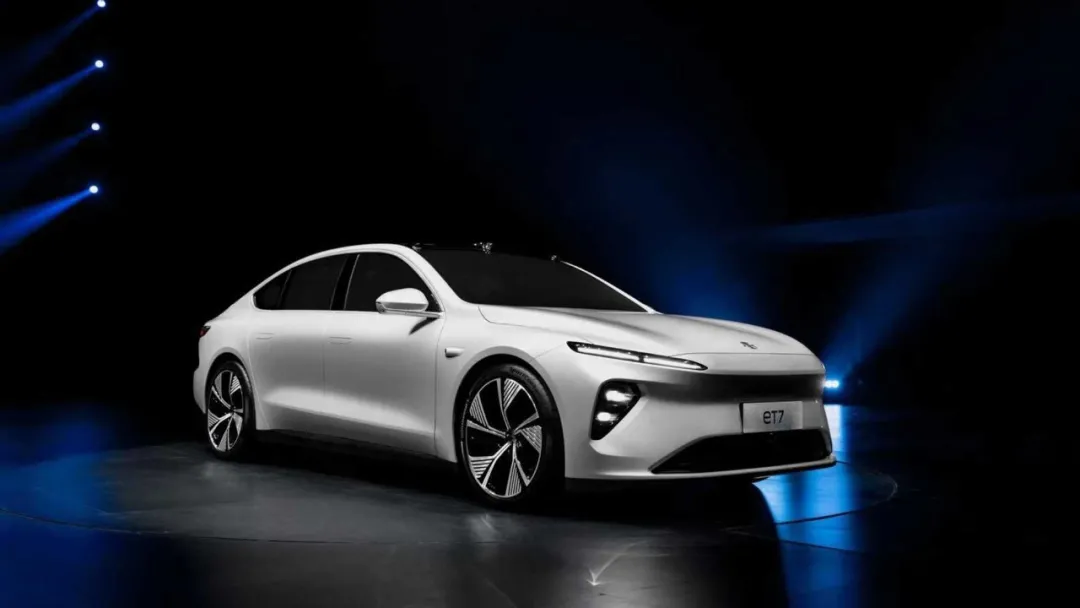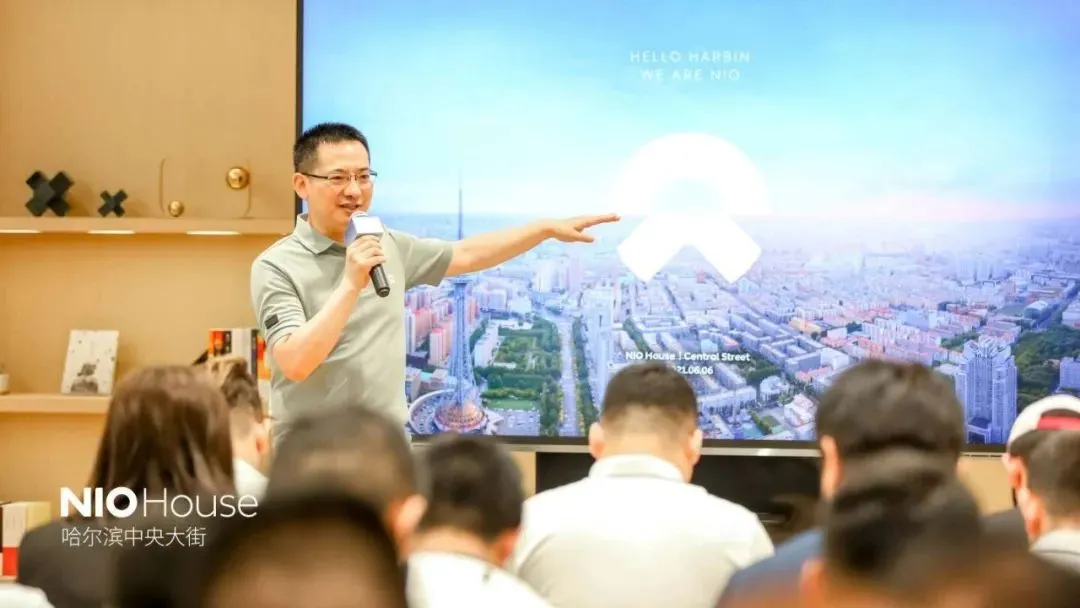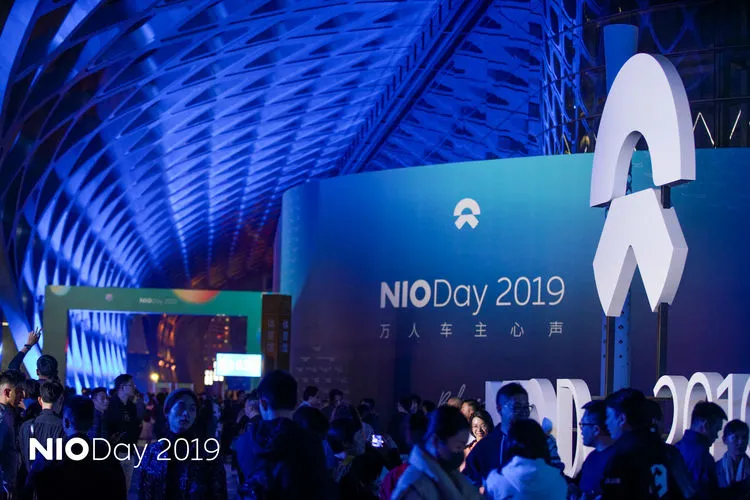On August 12th, at 5:30 am, NIO released its Q2 2022 earnings report. NIO’s founder, chairman and CEO, William Li, announced plans to deliver three new models based on the NT 2.0 platform (NIOTechnology) in 2022.
Just two days ago, the China Passenger Car Association (CPCA) released the retail sales data for the passenger car market in July 2021. The entire market has seen a YoY decline of 6.2%, but the new energy vehicle segment has grown by 169.4%, with a retail penetration rate of 14.8%.
Changes are happening.
From 3 Models to 6 Models
From the founding in late 2014 to the delivery of the first three models of NIO in 2020, it took six years. However, from 2020 to 2022, the second three models of NIO only took three years.
Li Bin did indeed mention 2023: “In two years, you can imagine that more models will be delivered.”
Let’s compare this to Tesla’s Model S, which was first proposed in 2009, and 11 years later, the Model Y was delivered, completing four models.
Thus, NIO is indeed establishing a highly efficient and parallel R&D capability that is different from all new car companies, and different from that of Tesla, to cope with the upcoming new energy vehicle market boom. Li Bin stated at the earnings call, “In terms of automobile R&D cycle, our company is the fastest in the industry, and it typically takes about two years on average.”
If we compare this to a traditional automaker’s 40-50 month R&D cycle from project approval to production of a new model, NIO has established an impressive R&D efficiency.
However, R&D is not the end of a model’s production. Parallel research and development means that all aspects, such as design, engineering, manufacturing, supply chain, project management, sales, delivery, and after-sales support, must have parallel capabilities. Considering the battery and chip shortages in 2021 and the COVID-19 pandemic fluctuations globally, you can realize how ambitious NIO’s plans are.In fact, according to the official disclosure, NIO’s partner, a supplier of interior panels, is located in the high-risk area of the epidemic in Nanjing, which is currently in a state of shutdown; and the epidemic in Malaysia has already caused multiple chip factories to shut down, affecting NIO as well. In July, the floods in Germany caused damage to some of NIO’s component suppliers in Europe, and these recurring unexpected events are continuing to affect NIO and have been reflected in its July sales figures.
On the R&D front, NIO’s plan is to double the size of its R&D team by the end of this year compared to the beginning of the year. However, NIO’s execution so far still cannot reassure Wall Street. This may be a dramatic scene on NIO: a company that has long been known for “burning money” now seems to have trouble spending money quickly.
NIO’s R&D investment in Q2 was RMB 883.7 million, a 28.7% increase from Q1’s RMB 686.5 million, but still far from the guidance of “RMB 5 billion in annual R&D investment” announced at the Q1 earnings conference. Essentially, today’s Li Bin is more focused on the quality of investment than ever before. He once said at a media communication meeting before, “Now I’m a little anxious that I have money to spend but can’t spend it. There is a lot of pressure to spend money efficiently on corporate operations.”
However, Li Bin reiterated the full-year R&D investment of RMB 5 billion at the Q2 earnings conference. Simple calculations indicate that NIO’s R&D investment in the second half of the year will achieve a 100% increase in the environment-to-environment comparison.
In terms of the autonomous driving team, NIO’s autonomous driving department already has four VPs reporting directly to Li Bin. Since this year, the team has been vigorously strengthening perception algorithms. On NIO Pilot, the core perception algorithm comes from Mobileye, a visual perception supplier that is not open to car companies. Li Bin expects that NIO’s autonomous driving team will further increase by 300 people in the next five months, reaching a scale of 800 people.
Details in Earnings Report
NIO delivered 20,060 vehicles in Q1 and 21,896 vehicles in Q2. This stable and slight increase in performance can give us a basic expectation for most Q2 earnings data.In fact, this reflects the normal fluctuation of a slight increase in sales volume, including total revenue, automotive sales revenue, and gross profit.
Sales volume was 21,896 units, an increase of 9.1% over the previous month.
Total revenue was 8.448 billion yuan, an increase of 5.8% over the previous month.
Automotive sales revenue was 7.911 billion yuan, an increase of 6.8% over the previous month.
Gross profit was 1.573 billion yuan, an increase of 1.2% over the previous month.
However, as you can see, the month-on-month increase in gross profit seems unreasonable, and further examination reveals a 18.6% gross profit margin, which declined compared to Q1.
Regarding this issue, NIO’s Vice President of Finance, Qu Yu, explained that due to the increased proportion of ES6 with lower pricing and gross profit margin, NIO’s average transaction price in Q2 compared to Q1 decreased by 8000 yuan. At the same time, based on the sustained operational work, NIO’s average single-car cost in Q2 decreased by 3000 yuan. The comprehensive result is that NIO’s single-car gross profit in Q2 decreased by about 5000 yuan.
Another important reason is that starting from Q2, NIO has adopted a more conservative approach to shorten the depreciation and amortization cycle of products on sale, which has led to an increase in the depreciation and amortization cost per car.
This is a more noteworthy signal. NIO has accelerated the depreciation and amortization, which means that NIO will migrate its entire product line to the new NT 2.0 platform with the highest R&D efficiency as possible. Next year, the three new vehicles led by ET7 marks the opening of the battle.

We mentioned new models again, and at NIO’s Q2 earnings conference, the new models really stole the show.
Back to 2019
There have been countless rumors about NIO’s new models. Currently, the most widely circulated unofficial version is that in addition to ET7, NIO will also launch a new SUV ES7, codenamed Gemini, positioned between ES6 and ES8, and a sedan ET5, codenamed Pegasus, which will be the cheapest NIO car.
Before this, JAC Motors had released a bidding announcement titled “JAC NIO Annual Production of 60,000 Gemini Model Production Line Flexible Technological Transformation Project Assembly Chassis AGV Renovation”. On June 6th, NIO’s president, Qin Lihong, confirmed the existence of this vehicle during the opening of the NIOHouse in Harbin, and revealed that this model will be put into production in 2022.
 NIO further confirmed in today’s financial report that the design capacity of NIO-JAC factory has been expanded to 240,000 vehicles per year. In addition to ES8, ES6, EC6 and ET7, there are new models under development. What about ET5? ET5 may be the most critical model for NIO. According to Li Bin, it will become the lowest-priced NIO model. Referring to the pricing of ES6 with optional BAAS battery rental service, this means that even considering the impact of subsidy reduction next year, the threshold for ET5 with optional BAAS will be below 300,000 yuan. Similarly, according to the concept of “Data is the production material of algorithms,” NIO will obviously continue the configuration logic of NIO Pilot and the digital cockpit in previous product lines and equip ET5 with NAD autonomous driving and a brand-new generation of digital cockpit chips. Will ET5 continue to be produced on the same platform as the preceding models? On June 10, Li Bin publicly stated that NIO’s second factory, located in Hefei NEO Park, has begun construction and will be put into operation in the third quarter of 2022. Combined with the information above, ET5 will obviously be the first model to settle in NEO Park. From an external perspective, ET5’s peer competitors in the same price range include BMW 3 Series, Audi A4, Mercedes-Benz C-Class, and XPeng P7, and of course, the most important one, Tesla Model 3. Unfortunately, the story goes: NIO has taken out a competitive product to confront a strong opponent at its best state, but details tend to be obscured in this “condensed” summary. So when was ET5 established? Li Bin said that NIO’s average product development cycle is two years, but NIO’s first model, the ES8, lasted about four years from early 15 to mid-18. We take the middle value of three years for estimation, and according to the spot of Q3 2022, ET5 may have been established between Q2 and Q4 in 2019. What happened to NIO in 2019? Many people’s memories of 2019 have become fuzzy. In March, Li Bin issued the first internal memo involving layoffs, announcing a team size optimization by about 3%. In April, a NIO ES8 caught fire in Xi’an. In June, NIO announced a recall of 4,803 ES8 vehicles. In August, Li Bin issued the second memo to all employees, announcing a layoff plan that involved 1,200 positions. In September, NIO’s stock price plummeted to $1.7, down 80% from its peak.# A “Perfect Storm” for NIO in 2019
NIO further confirmed in today’s financial report that the design capacity of NIO-JAC factory has been expanded to 240,000 vehicles per year. In addition to ES8, ES6, EC6 and ET7, there are new models under development. What about ET5? ET5 may be the most critical model for NIO. According to Li Bin, it will become the lowest-priced NIO model. Referring to the pricing of ES6 with optional BAAS battery rental service, this means that even considering the impact of subsidy reduction next year, the threshold for ET5 with optional BAAS will be below 300,000 yuan. Similarly, according to the concept of “Data is the production material of algorithms,” NIO will obviously continue the configuration logic of NIO Pilot and the digital cockpit in previous product lines and equip ET5 with NAD autonomous driving and a brand-new generation of digital cockpit chips. Will ET5 continue to be produced on the same platform as the preceding models? On June 10, Li Bin publicly stated that NIO’s second factory, located in Hefei NEO Park, has begun construction and will be put into operation in the third quarter of 2022. Combined with the information above, ET5 will obviously be the first model to settle in NEO Park. From an external perspective, ET5’s peer competitors in the same price range include BMW 3 Series, Audi A4, Mercedes-Benz C-Class, and XPeng P7, and of course, the most important one, Tesla Model 3. Unfortunately, the story goes: NIO has taken out a competitive product to confront a strong opponent at its best state, but details tend to be obscured in this “condensed” summary. So when was ET5 established? Li Bin said that NIO’s average product development cycle is two years, but NIO’s first model, the ES8, lasted about four years from early 15 to mid-18. We take the middle value of three years for estimation, and according to the spot of Q3 2022, ET5 may have been established between Q2 and Q4 in 2019. What happened to NIO in 2019? Many people’s memories of 2019 have become fuzzy. In March, Li Bin issued the first internal memo involving layoffs, announcing a team size optimization by about 3%. In April, a NIO ES8 caught fire in Xi’an. In June, NIO announced a recall of 4,803 ES8 vehicles. In August, Li Bin issued the second memo to all employees, announcing a layoff plan that involved 1,200 positions. In September, NIO’s stock price plummeted to $1.7, down 80% from its peak.# A “Perfect Storm” for NIO in 2019
Li Bin later described 2019 as a “perfect storm” for NIO. It was in this “perfect storm” that ET5 began brewing.

In 2022, NIO will face the comprehensive challenge brought by doubling its product line, but will also have the most complete product layout in the new car camp, covering the subdivided market. The Q2 financial report, as well as the Q1 and Q3 financial reports, are just interim footnotes in NIO’s marathon.
This article is a translation by ChatGPT of a Chinese report from 42HOW. If you have any questions about it, please email bd@42how.com.